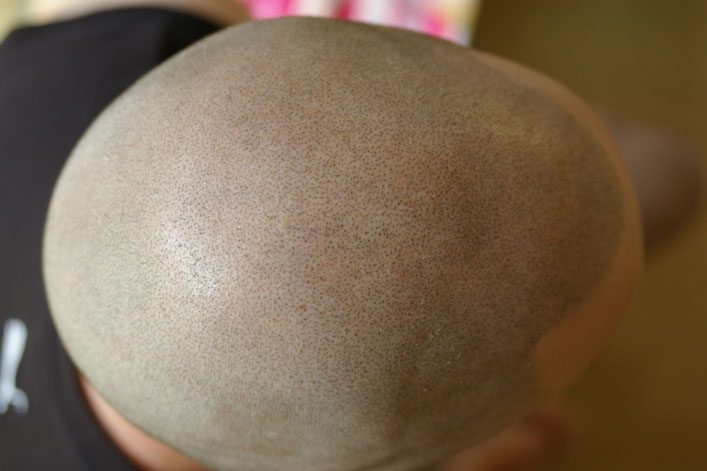Treatments for hair loss come with its own set of advantages as well as defects. None are perfect though most are able to adequately address a balding condition. This can be evidenced by its side effects or its poor implementation. It may not be enough to warrant avoiding a particular product or service though caution should be taken before proceeding with its treatment.

A scalp micropigmentation (SMP) procedure is considered to be among one of the safest and most effective remedies to treat hair loss. It is able to quickly address almost any balding condition through its unique ability to create an illusion of hair upon the scalp. A casual observer will be unable to detect that it is actually pigments and not real hair follicles that appear on a patients head. Even those closest to him might not be able to tell the difference. The only reason why they could notice its presence is because of the sudden appearance upon his scalp. Its imperceptibility, ease of application and speed in its completion make SMP one the most viable solutions for alopecia.
Even though there is a lot going for this treatment, there is also a side of it to look out for. Note that a quality clinic would not have any of these problems that are about to be discussed. No stage in its application may it be before, during or after is left to chance. All efforts are made toward delivering a high quality output for each and every client to enjoy.
Those to be wary of are clinics that are negligent of this process or even disregard it entirely. Some may attribute it to oversight though it could mostly be caused by the lack of training or motivated by quick monetary gains. This often comes at the expense of the client, who has to deal with a poorly made SMP. Not only would he have to spend for its removal, he also has to carry the burden of a compounded bout of anxiety caused by his balding condition and the traumatic experience that resulted from the failed desire to treat it. He might be hard pressed to look for the next clinic to actually remedy his alopecia.
Sub-standard clinics might have to use low quality materials to be able to offer their services at a lower price. Pigments applied with such inks can result in a bluish tinge, which could appear slightly grotesque but extremely noticeable. This could exude the same qualities as a bad tattoo, which is the opposite of what SMP hopes to accomplish. Using the wrong needles could also generate a similar result. Worse, it may even be unsanitary either because it was mistakenly left out in the open for too long or intentionally used despite knowing that it was no longer fit for hygienic purposes.
Knowing the clinic to avoid can help save a lot of time and energy in trying to fix a poorly made treatment. The clear signs would be a below market price for this service. Reputable clinics usually offer their treatments at a cost of around £2500-3000 ($4000-4500). Anything below this should not be considered by anyone canvassing for an SMP facility. Another thing to look out for is the lack of credentials by the technician. It is simple to find out how experienced he is by inquiring about his specialisation, where he received his training and how many clients he has serviced. Researching for feedback is also instrumental in avoiding any problems that may result from a misguided decision to engage the services of an inferior SMP clinic.
SHARE
